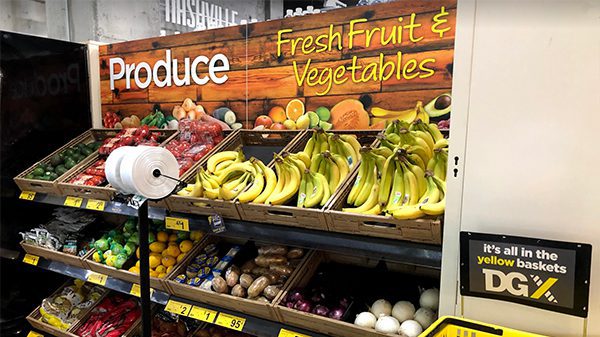Forbes magazine is breathless about Dollar General BB #:172794.
A recent feature article tells us that the chain is spreading “like hot gossip in tiny towns around the country.”
Writer Lauren Debter is particularly impressed by the fact that Dollar General is opening three new brick-and-mortar stores a day.
It mentions one community, Olive Hill, in the northeastern corner of Kentucky. In 2019, when the one local supermarket failed, the owner approached Dollar General to see if it wanted to take over the property. It did. It has since built 3 other stores in the community of 1,500 people.

Average paychecks in the region amount to $28,000 per year, and a quarter of the local population live below the poverty line.
Dollar stores are hardly a complete innovation in retail. One ancestor is the now-defunct F.W. Woolworth stores, which were famous for selling items for 5 and 10 cents. They came to be called “five-and-dimes,” a name that stuck long after the prices were obsolete.
By 1910, Woolworth’s was successful enough to commission New York’s Woolworth Building, an early version of the skyscraper. The building was completed in 1913.
Let’s look at the economics. Using an online inflation calculator, I see that 5 cents in 1913 is equivalent to $1.46 today; 10 cents is the equivalent of $2.92 today.
Voilà! The Dollar General of the World War I era! Actually, to judge by the above calculations, $1 is worth less than 5 cents was at that time.
Woolworth’s and its competitor, Kresge’s (later K-Mart) have since met their demise, but the concept is clearly perennial.
Dollar stores seem to be the single most important answer to the problem of the food desert—areas that have little or no access to fresh groceries.
Not all dollar stores are the same. Don’t make the mistake I did when I started researching this article: Dollar General isn’t Family Dollar, a chain that gained some unwelcome publicity earlier this year when it had to close over 400 stores because of severe rodent infestations.
Dollar General’s magic formula? “Cheap real estate, cheap labor and cheap construction,” says Forbes.
Not all Dollar Generals are in impoverished areas. There’s one in Naperville, an Illinois city so affluent that one local liquor store offers endcap specials featuring Bordeaux for $115.
In any event, the chain is an example of an area where Americans excel: moving swiftly and effectively into a hungry market.
Most importantly for our point of view, Dollar General has begun selling fresh produce, as our retail editor, Pamela Riemenschneider, pointed out in an article last year.
“Shoppers at the Olive Hill locations can buy bananas, onions, lettuce, deli meat, milk and other basic groceries in addition to everyday items like toilet paper, dish soap and cigarettes,” says Forbes.
The sparkling futuristic visions of the twenty-first century somehow never included people having to scrounge as hard as ever for the basics.
Those who are at least have dollar stores.



